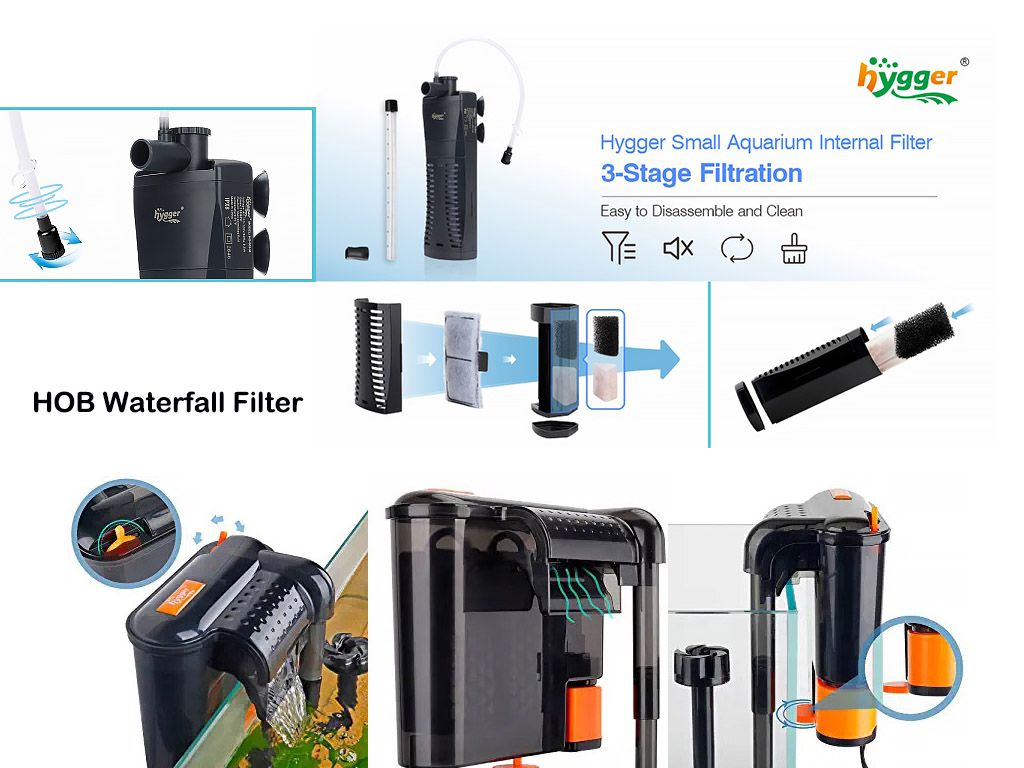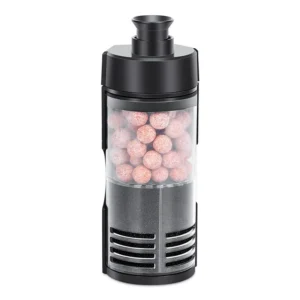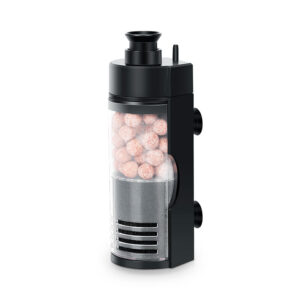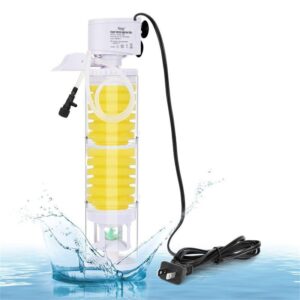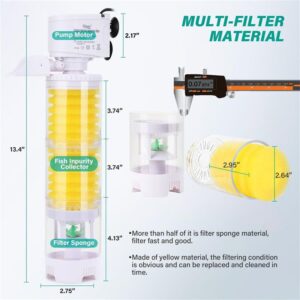What Size Aquarium Filter is Best For My Tank
The aquarium filter is one of the most critical components of any fish tank. It helps to keep the tank healthy and clean. Choosing the right type and aquarium filter size seems a bit of a difficult task. But I’ll break it down for your new aquarium setup so that it’ll be a fun procedure.
It involves the knowledge of different types of filters, which type is suitable, the right aquarium filter size selection, and some economic options.
Aquarium filter for new aquarium
A new aquarium setup mainly requires the development of a nitrite and ammonia cycle. Therefore, biological filtration is mainly required. Here are some commonly available and used filters for this purpose. Some of them are suitable for medium to large aquariums while the rest are used for smaller to medium aquariums. However, you can use small capacity filters for large setups by using them in multiples.
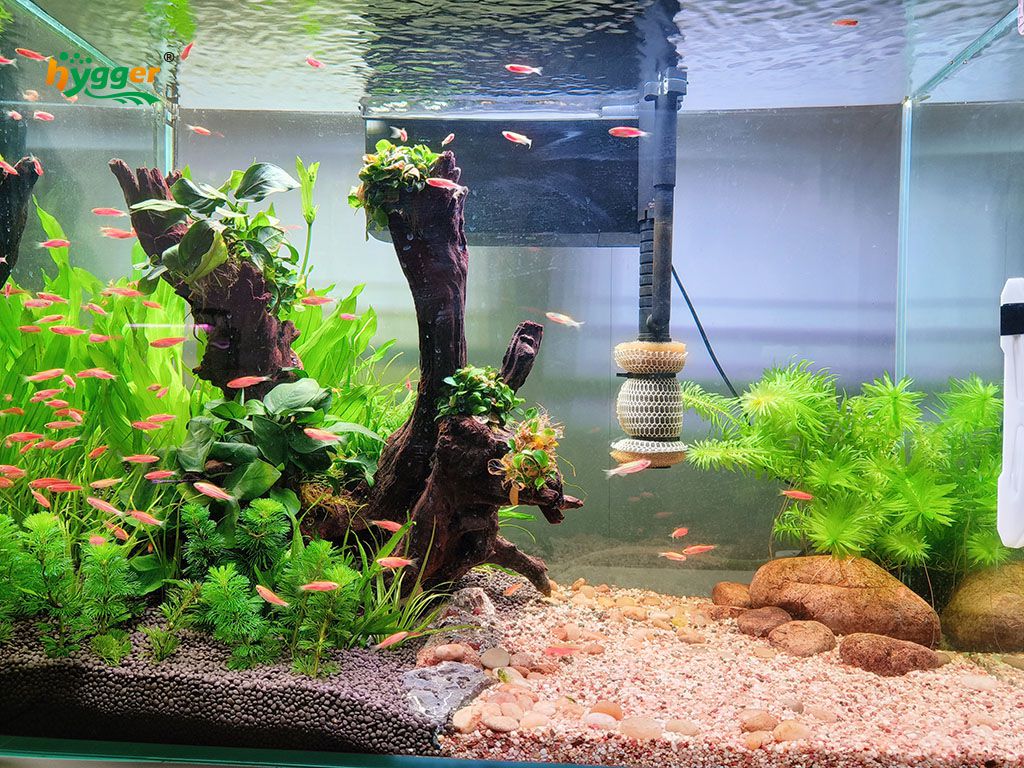
Canister Filters
Canister filters are one of the most complete packages for the new aquarium. These are the most powerful filter sizes for aquariums from medium to large-size, I.e., greater than 40-gallon tank capacity. They are externally attached to tanks. All water passes through the filter with pressure, so that no bubbles remain there. Water passes through a filter membrane, i.e., the residence of beneficial bacteria, where water is treated biologically and mechanically.
There are some downsides that you may feel, i.e., Highest price
- Hard to clean.
- Difficult to prime.
However, you can move with it for your medium to larger tank. But if you have small to medium tanks, an internal canister filter is a better choice and easy to clean.
Hang-On-Back (HOB) Filters
These are the most popular aquarium filters among aquarists. As the name suggests, these filters hang on the backside of the fish tank. Here’s the work.
A pump helps to pass the pressurized water through a filter membrane, where different types of filtration happen, i.e., mechanical and biological. Some filters also come with compartments for chemical additives. Filtered water back into the tank through the nozzle of the filter.
The advantages of the HOB waterfall filters:
- An adjustable flow rate option is available.
- Maintenance is very simple due to simple design.
- Suitable for small to medium size tanks.
- Come in an affordable price range.
- Mostly quiet, but some models can be noisy.
Sponge Filters
Sponge filters are one of the most common and simple types of aquarium filters. They are widely used in fish stores, fish rooms, and breeding tanks. Though they are common in small to medium-sized tanks, however, you can use these aquarium filters for larger sizes, but need to be installed in multiples.
It consists of 3 main components, i.e., sponge filter, air pump, and airline tubing. The sponge filter stays inside the tank, while the pump sits outside, and the airline tubing connects both.
The air pump pushes air inside the tank to the sponge filter and it creates air bubbles, which help to draw the water inside the sponge. This sponge mechanically cleans the aquarium water and also helps to grow beneficial bacteria on its surface.
The advantages of the sponge filters:
- Cheap
- Easy to clean
- Easy to maintain
- Longer chance of surviving beneficial bacteria on the sponge surface.
Internal Filters
Internal filters are another option for small to medium size new tanks. They help to do biological filtration.
These internal filters intake the water through pump suction and pass through several filter media, where mechanical as well as biological filtration happens.
The advantages of the internal filters:
- They help to save space
- Submerged in water without obstruction
- Both biological and mechanical filtration are done with it.
- Easy to install
- The flow rate could be adjusted
- It is budget-friendly
- Easy to maintain
Fluidized Bed Filters
Fluidized bed filters are one of the best option filtration options in new aquariums of large size. They are excellent in biological filtration and have various filter sizes for aquariums.
These filters have dedicated chambers for different types of filter media. The water pressure is maintained in such a way that all irregularly shaped filter media, i.e., sand, and charcoal, remain fluidized in the chamber. It’s also keep in mind that the pressure shouldn’t be too high to wash them out. These media mechanically and biologically filter the aquarium water.
The features of fluidizer bed filters:
- Different filter media’s effect on filtration efficiency
- High biological filtration capacity.
- They create a highly oxygenated environment
- Suitable for large-size aquariums.
- Have a complex setup.
How do I know if the filter is adequate for the tank?
There are several parameters to check whether the filter is suitable for your tank or not. Check out the suitability with the following points to choose the right filter size for the aquarium.
Check the flow rate of the pump
Check out the flow rate of the filter pump. It’s provided by the manufacturer. However, it is said that the filter should circulate the entire aquarium water at least 4 times in one hour.
Tank size
What the volume of your tank is the next question to check whether the aquarium filter size is suitable for your tank or not.
Bioload of aquarium
How many and what types of aqua pets are there in your aquarium, is the next evaluation thing. The higher the bioload, the more robust the filter media required.
Filter types
What is your filter type, as it match your tank size or not? You can choose the filters mentioned above or combine them according to your needs.
Filter media
A new aquarium is highly required to set up nitrite and ammonia balance. Fluidized bed filters are one of the eye-catching options for large-size tanks.
Water quality
Filter selection for aquariums also depends on water quality. Freshwater tanks require less circulation and on the other hand saltwater requires higher.
Maintenance requirements
Check whether you can easily maintain the filter type or not. Some filters require extra maintenance care, i.e., fluidizer bed filters, and some are easygoing, such as sponge filters, waterfall filters, and so on.
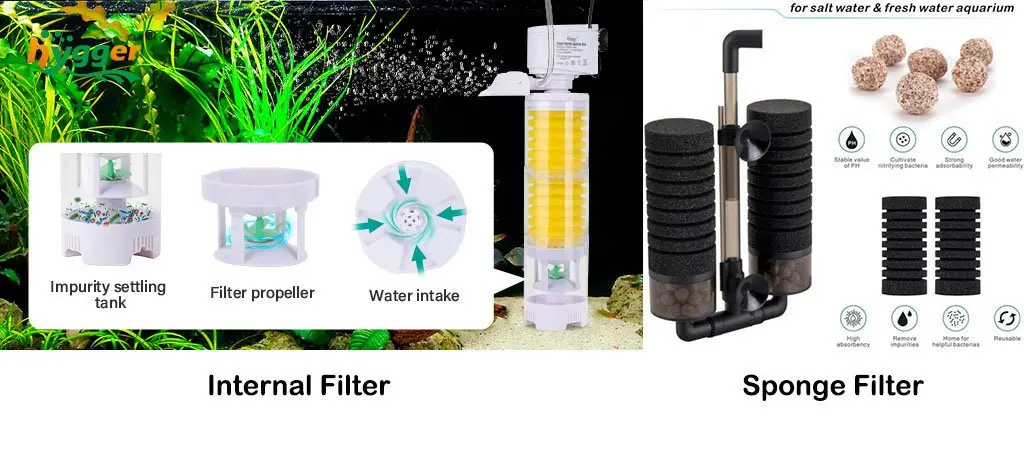
Choosing the right size of aquarium filters
Choosing the right filter size for the aquarium is a crucial part of the aquarium setup. Here are some of the tank capacities being discussed.
20-gallon tank
- At least 80 gallons of water per hour of filtration
- Quiet operation
- Easy maintenance
- Adjustable flow rate options should be there.
- Bioload is not a big deal for small tanks, but check it out.
HOB filters are recommended for these 20 gallons.
55 gallons tank
- Flow rate
200 to 350 gallons per hour.
- Select filter type
HOB and canister filters are suitable. If you have a sump in your tank, then go with the sump filtration option.
- Filter media
Mechanical and biological filtration capacity should be checked.
- Flow rate adjustable
The flow rate should be adjustable.
- Maintenance
The maintenance should be easy and a periodic maintenance routine.
- Eye on water parameters
Keep a proper eye on the water parameters, i.e., nitrite, pH, and ammonia levels.
100 gallons tank
- Flow rate
The flow rate should be between 400 and 600 GPH.
- Filter type
The filter should have a high-capacity pump. Canister filters or installing 2 sponge filters separately on both sides of the tank are suitable options for it.
- Media capacity
Go with multiple bracket filters, so you can use it for a longer time without debris removal.
- Filtration
It should come with both mechanical and biological filtration options.
- Maintenance
It should be easy to maintain.
- Noise level
Check out the noise level of it.
- Maintenance routine
Set a proper maintenance routine for your tank and also keep an eye on the tank water parameters.
180 gallons tank
It requires some extra points than a 100-gallon tank, as 180 gallons is a large-size tank.
- Additional circulation
Introduce a powerhead or additional wavemaker pump to properly maintain the water circulation.
- Backup filter
Keep an extra canister filter as a backup in case of any emergency.
The most economical fish tank filter
Cost is one of the deciding factors for filter selection. You can go with combinations, i.e., a combination of mechanical and biological filtration, complementary filters, use HOB filters with canister filters. Sponge filters are the best budget option for small to medium aquariums. Some say to go with a secondhand filter, but I’ll say don’t put yourself in danger.
However, if you are looking for the name, then hygger internal power filter is the name for you.
Conclusion
New aquarium setup mainly requires biological filtration. Some of the filter types are discussed above with their working and characteristics. How to select a filter for your setup also can be learned, and the cheapest option is also there. Finally, thanks for your time.

